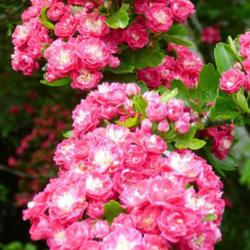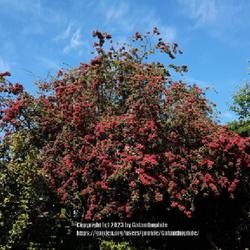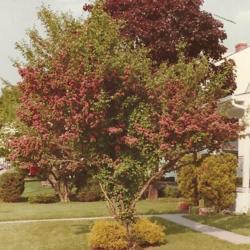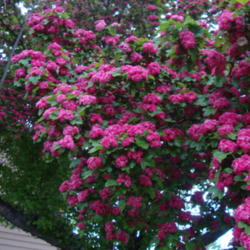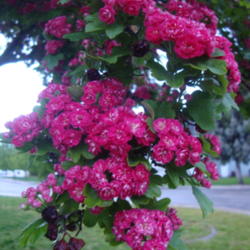| Plant Habit: | Shrub Tree |
| Life cycle: | Perennial |
| Sun Requirements: | Full Sun |
| Water Preferences: | Wet Wet Mesic Mesic |
| Minimum cold hardiness: | Zone 4a -34.4 °C (-30 °F) to -31.7 °C (-25 °F) |
| Maximum recommended zone: | Zone 8b |
| Plant Height: | 15-20ft |
| Plant Spread: | 20ft |
| Leaves: | Good fall color Unusual foliage color Deciduous Other: Leaves alternate, glossy green, rounded 3-5 lobed, serrulate, of variable size. |
| Fruit: | Showy Other: Red |
| Flowers: | Showy Other: Flowers double. |
| Flower Color: | Other: Rose/Mauve |
| Flower Time: | Spring |
| Uses: | Flowering Tree |
| Wildlife Attractant: | Bees Butterflies |
| Resistances: | Drought tolerant |
| Toxicity: | Other: Seed is poisonous if ingested |
| Pollinators: | Midges |
| Miscellaneous: | With thorns/spines/prickles/teeth |
| Awards and Recognitions: | RHS AGM |
